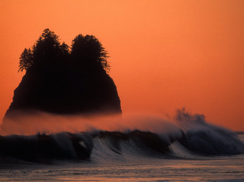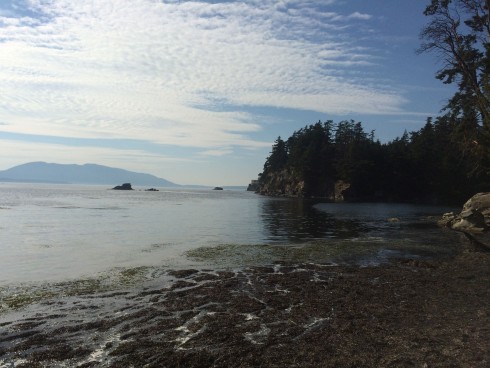
Climate change is happening. As coastal residents, beachgoers, and ocean users we have an important role to play in raising awareness about the decisions we make and how the associated impacts affect the resources that we care so much about. While there is no silver bullet to solving the challenges ahead, through our collective actions we can have a meaningful impact by adapting to this change and planning ahead for our future generations and creating more resilient coastal communities.
 With 157 miles of shoreline on the outer coast & 3,026 miles of shoreline in the tidally influenced Salish Sea & Puget Sound, Washington has an important role to play in the issue of sea level rise & coastal adaptation.
With 157 miles of shoreline on the outer coast & 3,026 miles of shoreline in the tidally influenced Salish Sea & Puget Sound, Washington has an important role to play in the issue of sea level rise & coastal adaptation.
As human activities and development in coastal areas increase, the need for preservation of our coastal zone and processes becomes ever more apparent. Coastal zones are particularly vulnerable to sea-level rise and enhanced storms, facing serious impacts including: (1) inundation and displacement of wetlands and lowlands; (2) increased coastal erosion; (3) increased coastal storm flooding; and (4) salinization. Widespread human development in many of these areas further compromises the coastal system’s natural integrity, simultaneously augmenting erosion and forfeiting inherent resiliency. “Hazards” occur when naturally dynamic coastal processes encounter static human development, and when humans interfere with marine and littoral systems.
Surfrider is in the early stages of developing a comprehensive strategy for our effective engagement on climate change and coastal adaptation. Here in Washington, we have recently hosted a workshop on Sea Level Rise and Ocean Acidification, check out the resources available via our Washington Coastal Blog. We are also actively engaged in updates for Pacific & Gray Harbor Counties Shoreline Master Plans (SMP's) read up on some of the available resources for more background. Our neighbors to the South in Oregon recently published a comprehensive blog post on the issue of Ocean Acidification, linking some of the existing Surfrider programs and recommended actions that can be taken to help be a part of the solution.
Get familiar with the lingo, yo!
Coastal Resilience: Coastal resilience means building the ability of natural and human communities to "bounce back" after hazardous events such as hurricanes, coastal storms, and flooding – rather than simply reacting to impacts. A community that is more informed and prepared will have a greater opportunity to rebound quickly from weather and climate-related events, including adapting to sea level rise. The ability to rebound more quickly can reduce negative human health, environmental, and economic impacts.
Blue Carbon: Coastal blue carbon is the carbon captured by living coastal and marine organisms and stored in coastal ecosystems. Salt marshes, mangroves, and seagrass beds play two important roles:
Carbon sequestration—the process of capturing carbon dioxide from the atmosphere, measured as a rate of carbon uptake per year
Carbon storage—the long-term confinement of carbon in plant materials or sediment, measured as a total weight of carbon stored
Managed Retreat: Managed or planned retreat (also known as managed realignment) allows the shoreline to advance inward unimpeded. As the shore erodes, buildings and other infrastructure are either demolished or relocated inland. It can also involve setting back a line of actively maintained defenses to a new line inland of the original – or preferably to rising ground – and promoting the creation of intertidal habitat between the old and new defenses. This can either be a complete removal or a breach of the defence (dike, seawall, revetment, etc.).
One of the best things that chapter members, activists, and interested citizens can do right now is to educate themselves on climate change and coastal adaptation, there is a wealth of information embedded within the links on this post and via the amazing resources on our Beachapedia page under Climate Change Adaptation and Sea Level Rise that you should check out.
